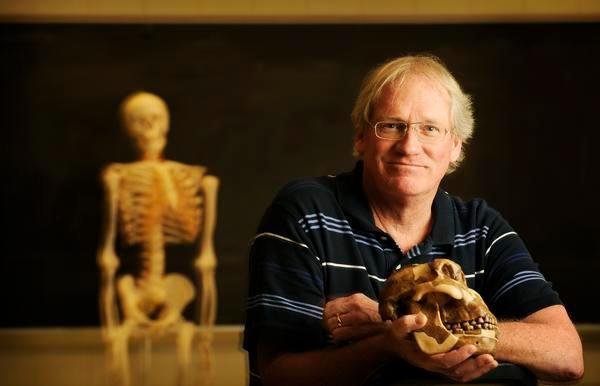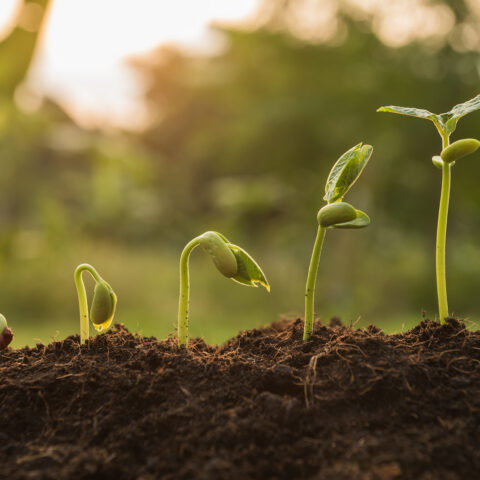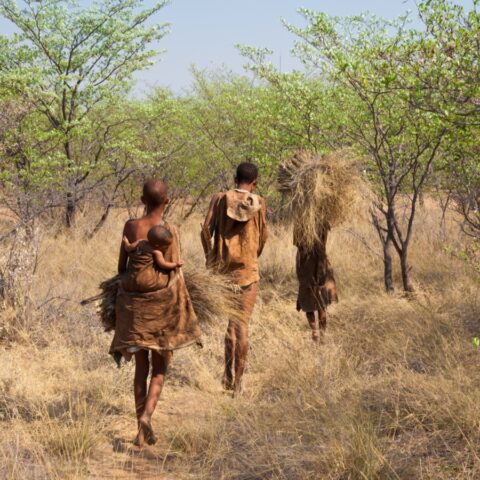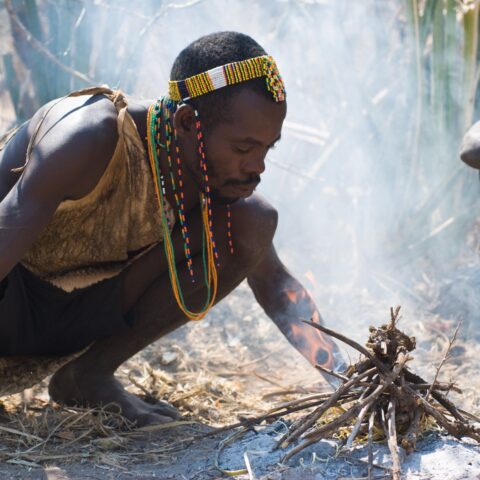History of The Paleo Diet

In the spring of 1987, Dr. Loren Cordain happened upon Dr. Boyd Eaton’s now classic scientific paper Paleolithic Nutrition: a Consideration of its Nature and Current Implications, which was published two years earlier in the prestigious New England Journal of Medicine.1 While that paper laid much of the foundation for what would become The Paleo Diet, it was in a subsequent paper that Dr. Eaton concluded that cereal grains were rarely or never consumed by pre-agricultural hunter-gatherers.2
After reading Dr. Eaton’s groundbreaking paper,1 Dr. Cordain became engrossed in studying ancestral human diets. He voraciously read everything he could about the topic. Initially, he filed these scientific papers and documents into a single folder labeled “Paleolithic Nutrition.” It soon became obvious one folder wasn’t enough for the enormous volume and diversity of topics that materialized.
Patterns began to emerge. Stone Age people did not consume dairy products and, so, a file folder labeled “Dairy” was created. Since Paleolithic humans also didn’t eat cereal grains, a single file folder called “Cereal Grains” was created. Again, it soon became apparent that each subsection of Paleolithic nutrition would require multiple folders that could fill a filing cabinet drawer. Eventually, each subsection was able to fill its own filing cabinet! Over the course of the next eight years, more than 25,000 scientific papers were collected, filling a room of filing cabinets—each with hundreds of categories dealing with all aspects of Paleo nutrition and lifestyle.
In 1994, Dr. Cordain mustered enough courage to telephone the man who was responsible for the collection of articles on anything and everything related to “Paleo.” Dr. Eaton and Dr. Cordain spoke for almost an hour on that very first telephone call, and Dr. Cordain received one of the greatest compliments of his life at the end of the conversation when Dr. Eaton said, “It sounds to me like you know more about this than I do.”
Drs. Cordain and Eaton eventually met in 1995 at Colorado State University, when Dr. Eaton was invited to present on Paleolithic nutrition. Two years later, the invitation was returned to Dr. Cordain when he was invited to speak with Dr. Eaton at an international conference on fitness and diet organized by Dr. Artemis Simopoulos in Athens, Greece. During one of the many conversations about diet and health, Dr. Cordain mentioned that he had written a partially completed manuscript on the nutritional shortcomings of cereal grains. About a year later, Dr. Simopoulos asked Dr. Cordain if he could complete the paper and submit it for publication in a scientific journal she edited. He did, and that paper, Cereal Grains: Humanity’s Double Edged Sword, published in 19993 launched Dr. Cordain’s published career in Paleolithic nutrition.
The Paleo Diet concept is now taken seriously in the scientific world thanks in part to Boyd Eaton’s pioneering work. Without Dr. Eaton’s influential 1985 New England Journal of Medicine paper,1 Paleo would likely have continued to be an obscure word known mainly to anthropologists. However, it was Dr. Cordain’s publication of the original book, The Paleo Diet, in 2002 that would turn the concept into a household term now recognized by millions.
The Paleo Diet and Paleo lifestyle are much larger than either the writings of Dr. Cordain or Dr. Eaton. Hundreds, if not thousands, of scientists, physicians, and people from all walks of life are responsible for creating this incredibly powerful idea that can be used to bring order and wisdom to dietary and lifestyle questions and issues.
Some of the key players who came before Dr. Eaton in the Paleo diet and lifestyle world require no introduction. Charles Darwin’s Origins of the Species was published in 1859 and started it all. It is amazing that perhaps the most powerful idea in all of biology (evolution via natural selection) generally had not been applied to nutritional thought until 126 years later with Dr. Eaton’s classic paper.1 Theodosius Dobzhansky, a well-known Ukranian evolutionary biologist said, “Nothing in biology makes sense, except under the light of evolution.” Indeed, his statement could easily be reworked to, “Nothing in nutrition makes sense, except under the light of evolution.”4 A similar quote could also be applied to a multitude of lifestyle issues.
References
- Eaton SB, Konner M. Paleolithic nutrition. A consideration of its nature and current implications. N Engl J Med 1985;312:283-9.
- Eaton SB, et al. Stone agers in the fast lane: chronic degenerative diseases in evolutionary perspective. Am J Med 1988;84:739-49.
- Cordain L. Cereal grains: humanity’s double edged sword. World Review of Nutrition and Dietetics. 1999;84:19-73.
- Dobzhansky T. Am Biol Teacher. 1973 March; 35:125-129.




